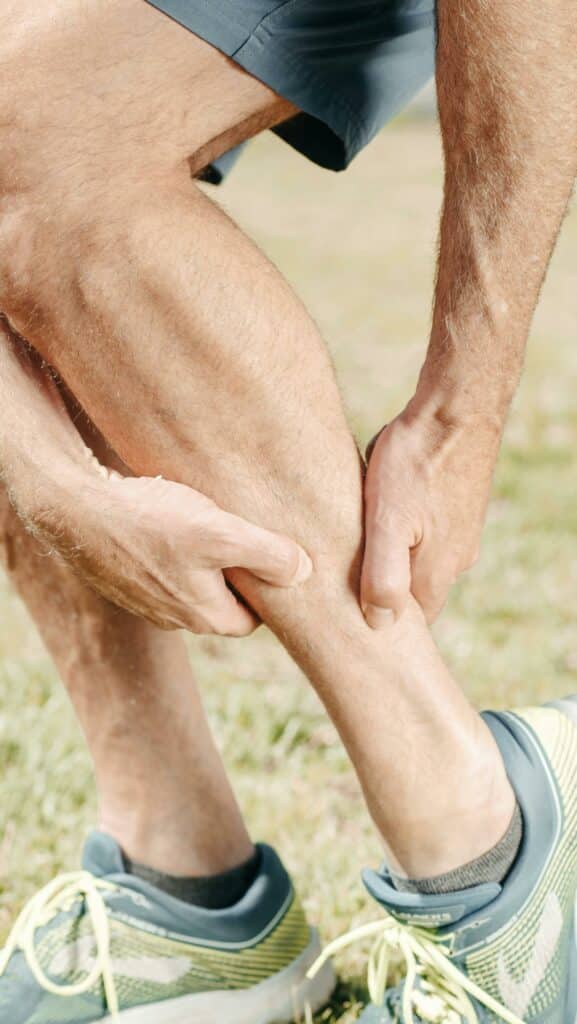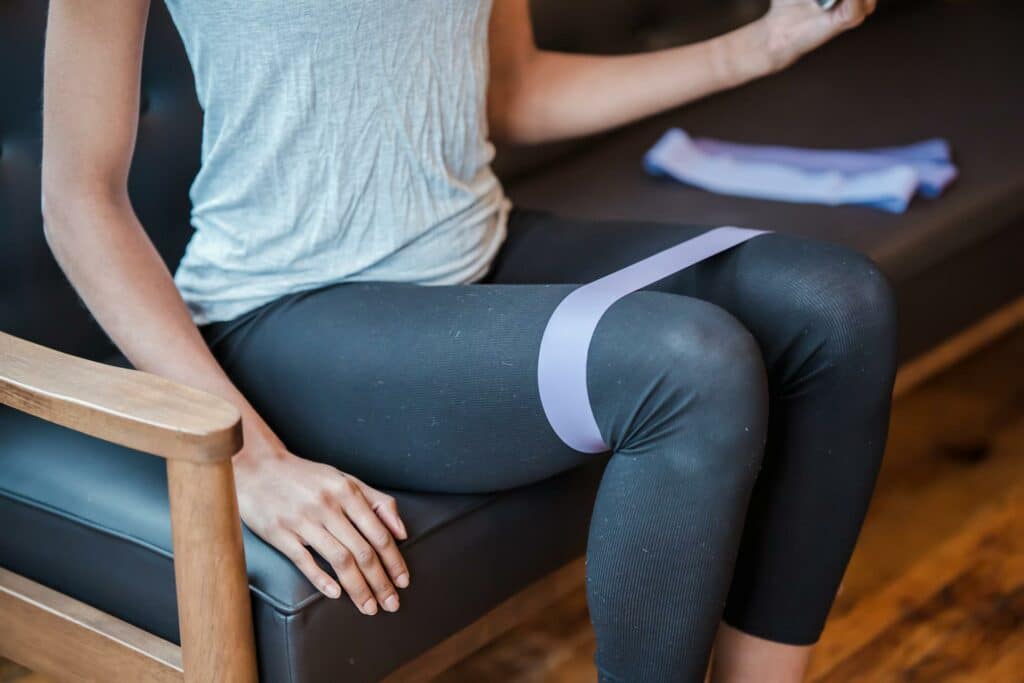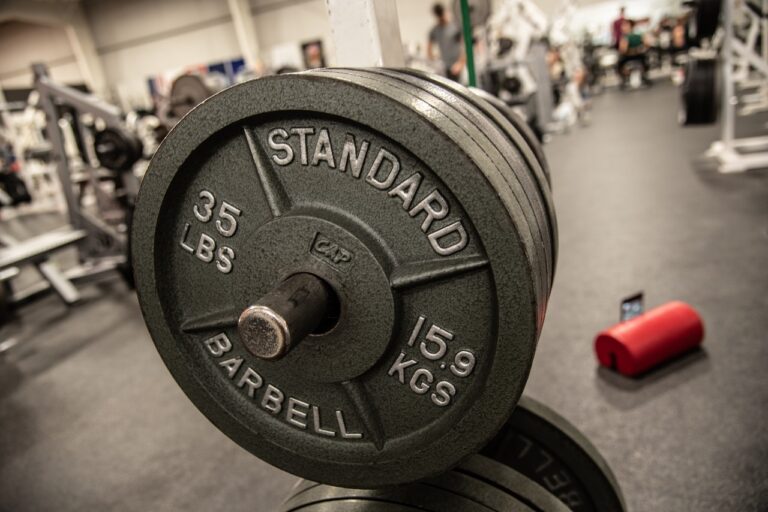The Path to Recovery from a Leg Injury: Ultimate Guide

- Should You Train To Muscle Failure Every Set? What You Need To Know - March 4, 2025
- Nutrition in a Hurry: Top Post-Workout Snacks for Active People - February 20, 2025
- 15 Healthy Meal Prep Recipes: Your Weight Loss Made Easy - February 18, 2025
Have you recently found yourself struggling with the frustrating process of recovering from a leg injury? If so, you’re certainly not alone. Leg injuries can be daunting, not just physically but emotionally and mentally as well. The journey to regaining full mobility and strength can feel overwhelming, but it’s entirely possible with the right approach, resources, and mindset.

Understanding Your Leg Injury
Types of Leg Injuries
Leg injuries come in various forms, and understanding your specific injury is the first step toward effective recovery. Here are some common types:
| Type of Injury | Description |
|---|---|
| Fractures | Breaks or cracks in the bone. |
| Sprains | Injuries to the ligaments caused by overstretching or tearing. |
| Strains | Injuries to muscles or tendons, often due to overuse or improper use. |
| Tendonitis | Inflammation of the tendons. |
| Dislocations | Bones forced out of their normal position. |
| Contusions | Deep bruises in the muscle tissue caused by direct impact. |
Identifying the type of injury you have is crucial for seeking the proper treatment and rehabilitation strategies.
Immediate Steps to Take Post-Injury
When you first experience a leg injury, it’s essential to take immediate action to prevent further damage. Here’s a quick guide:
- Rest: Give your leg a break to avoid exacerbating the injury.
- Ice: Apply ice packs to reduce swelling and numb the pain.
- Compression: Use a compression bandage to limit swelling.
- Elevation: Keep your leg raised above heart level as much as possible.
These steps, often referred to as the RICE method, can be incredibly effective in minimizing the extent of the injury and hastening the recovery process.
Seeking Professional Help
When to Consult a Doctor
It’s important to recognize when you need to bring in the experts. You should consult a healthcare professional if you experience:
- Severe pain that doesn’t improve with rest
- Significant swelling or bruising
- Inability to put weight on the injured leg
- Visible deformities
- Signs of infection, such as redness or warmth
Types of Medical Tests
Doctors may recommend various tests to accurately diagnose your injury. Common tests include:
| Test | Purpose |
|---|---|
| X-Rays | To identify fractures or dislocations. |
| MRI Scans | To get detailed images of soft tissues, tendons, muscles, and ligaments. |
| CT Scans | To provide a more comprehensive view of the bone and surrounding tissue. |
| Ultrasounds | To examine the soft tissues, tendons, and other related injury aspects. |
These tests help to paint a clear picture of your injury, aiding in the creation of a tailored treatment plan.
Developing a Treatment Plan
Customized Rehabilitation
Recovery from a leg injury often requires a personalized treatment plan. Your doctor or physical therapist will likely design a program based on various factors, including the type and severity of your injury, your overall health, and your activity level.
Medication and Pain Management
Proper pain management is crucial during the initial stages of recovery. Depending on your level of pain, your doctor might recommend:
- Over-the-counter pain relievers like ibuprofen or acetaminophen
- Prescription medications for more severe pain
- Anti-inflammatory medication to reduce swelling
Always follow your healthcare provider’s advice regarding medication to ensure safe and effective pain management.
Surgical Interventions
In some cases, surgery may be necessary, particularly for complex fractures, ligament tears, or dislocations. Surgeries range from minimally invasive procedures to more complex reconstructions. Discuss with your healthcare provider the risks, benefits, and recovery implications of surgical intervention.
Physical Therapy and Rehabilitation
Importance of Physical Therapy
One of the most critical components of recovering from a leg injury is physical therapy. A professional physical therapist can guide you through exercises that help restore:
- Strength: Rebuilding muscle strength around the injured area.
- Flexibility: Ensuring that muscles and tendons regain their elasticity.
- Balance: Re-establishing proprioception to prevent future injuries.
Phases of Physical Therapy
Physical therapy often progresses through several stages, including:
- Initial Phase: Focus on reducing pain and swelling, and preventing muscle atrophy.
- Intermediate Phase: Gradual re-introduction of movement and weight-bearing exercises.
- Advanced Phase: More dynamic exercises that enhance strength, flexibility, and coordination.
- Return to Activity: Tailored exercises specific to your daily activities or athletic needs.
Your therapist will tailor each phase to your unique situation, ensuring a safe and steady progression towards recovery.
Sample Exercise Plan by Phase
| Phase | Type of Exercise | Frequency |
|---|---|---|
| Initial | Gentle stretching, light non-weight-bearing movements | Daily |
| Intermediate | Resistance training, stationary biking, swimming | 3-4 times per week |
| Advanced | Dynamic stretching, plyometrics, running drills | 3-4 times per week |
| Return to Activity | Sports-specific drills, agility training, conditioning | 3-5 times per week |

Emotional and Mental Aspects of Recovery
Dealing with Setbacks
Recovering from a leg injury isn’t just a physical challenge; it can also be a mental and emotional one. Experiencing setbacks is common and can be discouraging. Here are some ways to cope:
- Stay Positive: Remember that setbacks are a natural part of the recovery process.
- Set Realistic Goals: Break down your recovery into small, achievable milestones.
- Seek Support: Connect with family, friends, or support groups.
Mental Health Strategies
Your mental well-being is equally important during this journey. Consider these strategies:
- Mindfulness and Meditation: Practices like mindfulness and meditation can help manage pain and anxiety.
- Counseling: Talking to a therapist can provide additional emotional support.
- Journaling: Writing about your recovery process can offer emotional relief and track your progress.
Adjusting to a new normal after a leg injury involves dealing with emotional highs and lows. Embracing these strategies can help.
Nutrition and Lifestyle Changes
Importance of a Balanced Diet
A balanced diet laden with essential nutrients can aid in your recovery. Focus on foods rich in:
| Nutrient | Food Sources | Benefit |
|---|---|---|
| Protein | Lean meats, legumes, dairy | Helps in muscle repair and growth |
| Calcium | Dairy products, leafy greens | Strengthens bones |
| Vitamin D | Fortified cereals, sunlight exposure | Enhances calcium absorption |
| Omega-3 Fatty Acids | Fish, flaxseeds, walnuts | Reduces inflammation |
| Antioxidants | Berries, nuts, dark chocolate | Supports tissue repair |
Maintaining a diet rich in these nutrients can significantly impact the speed and quality of your recovery.
Hydration
Keeping hydrated is often overlooked but remains paramount in recovery. Adequate water intake helps transport nutrients, manage inflammation, and keep your body functioning optimally.

Preventing Future Injuries
Strength Training
Building a robust exercise routine focusing on strength training can minimize the risk of re-injury. Key areas to focus on include the muscles around the knees, hips, and ankles. Stability exercises, such as squats and lunges, can fortify these muscles.
Flexibility and Balance
Incorporating flexibility and balance work into your routine can help your body become more resilient. Yoga and Pilates are excellent practices that improve flexibility and stability, enhancing overall leg strength and decreasing the likelihood of future injuries.
Proper Gear and Technique
Ensuring you’re using the correct gear and technique for your activities cannot be understated. This might mean investing in quality shoes, using appropriate support like braces or orthotics, or refining your athletic techniques to minimize strain and impact.
Chronic Conditions and Ongoing Care
Managing Chronic Leg Conditions
If you have pre-existing conditions, such as arthritis, that complicate your injury recovery, additional strategies might be necessary:
- Regular Medical Check-ups: Continuously monitor progress and adapt treatment plans.
- Tailored Physical Therapy: Customized exercises that don’t exacerbate chronic issues.
- Ongoing Medication Management: Balancing pain relief with other medications prescribed for chronic conditions.
Long-term Rehabilitation
Extended recovery might require a focus on long-term rehabilitation strategies, including:
- Periodic Physical Therapy: Regular sessions with a therapist to maintain gains.
- Home Exercise Programs: Continuing with a structured routine at home.
- Continued Nutritional Support: Ongoing dietary adjustments to support healing and health.
Taking these steps can ensure sustained recovery and optimal leg health over the long term.
Success Stories and Motivation
Personal Recovery Stories
Hearing about others who have successfully navigated the path to recovery can be tremendously motivating. Consider seeking out:
- Local Support Groups: Connecting with others facing similar challenges.
- Online Communities: Forums or social media groups can offer shared experiences and advice.
- Inspirational Stories: Reading about athletes or individuals who’ve made successful comebacks.
Setting Your Own Success Narratives
It’s important to focus on your unique journey and celebrate your progress, no matter how small. Every step forward is a milestone. Keep a recovery journal, set personal goals, and reward yourself for meeting them.
Conclusion
Recovering from a leg injury is undoubtedly a challenging and multifaceted process. However, with the right understanding, professional help, tailored rehabilitation, and emotional support, you can navigate this journey successfully. Remember, each step you take brings you closer to regaining your full strength and mobility. Stay positive, committed, and proactive in your recovery efforts, and you’ll find yourself back on your feet, stronger and more resilient than ever before.
Table of Contents







